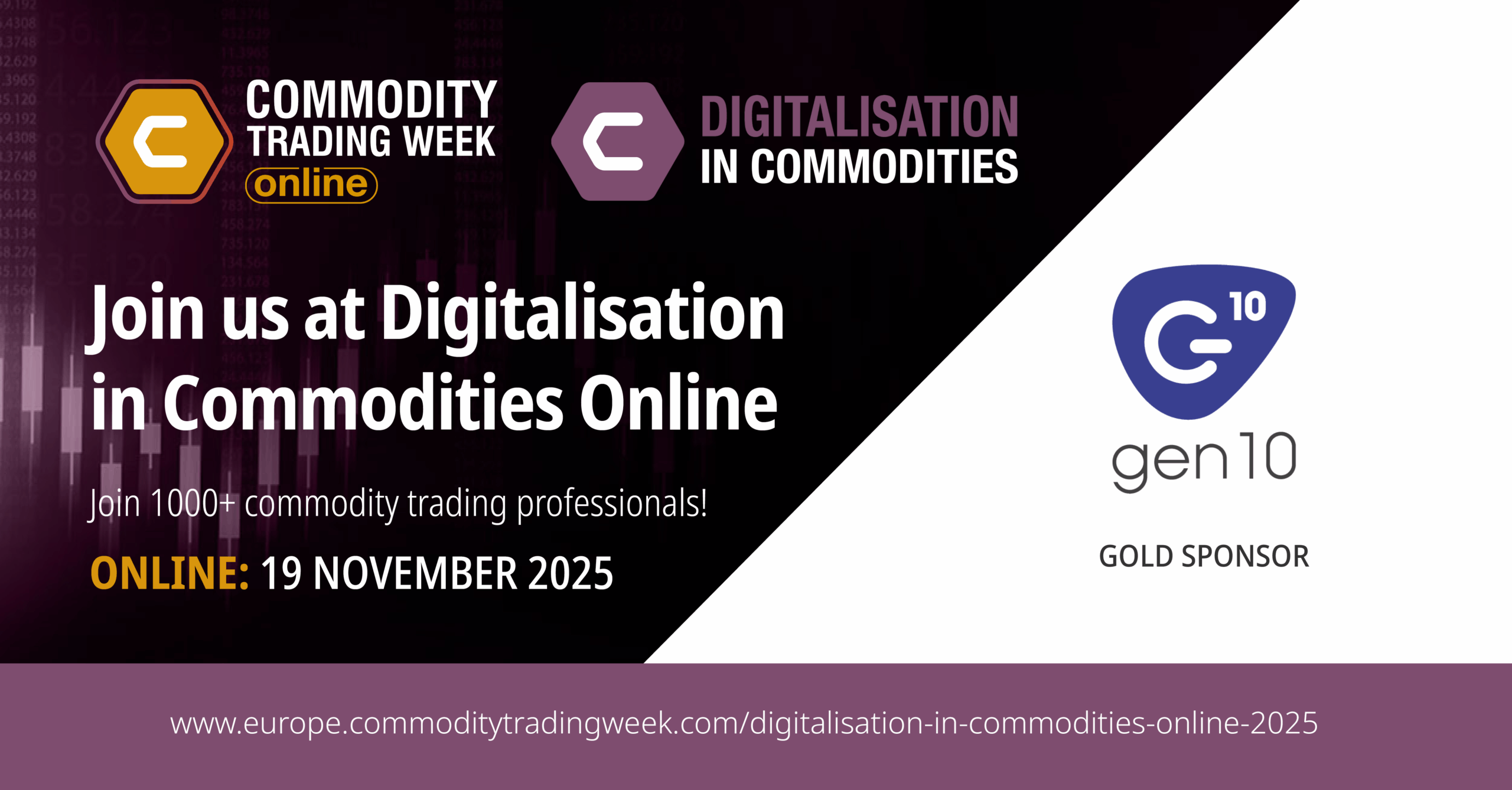This article is part of a series exploring CTRM and Commodity Management in cotton trading.
CTRM implementations are not as difficult or time-consuming as they used to be, with modular solutions that can be implemented in a more flexible manner and powerful cloud technology that allows for faster and more agile projects. What hasn’t changed is that there are still many considerations involved in any commodity management or CTRM implementation, particularly in cotton, where processes and systems can be complex and varied.
When planning a new CTRM implementation, your software vendor will help you map out your requirements and create a realistic project plan, but there are several areas that it can be helpful to think about when speaking to vendors and fleshing out your system requirements.
1. Define the problem
Putting into words exactly what the problem you’re looking to address is can be harder than you might expect. Many commodity management systems are brought in because the business is looking to address multiple problems in one easily-accessible environment. And as you speak to vendors you may find that their system addresses other challenges that were not part of your initial project scope. For example, you may not have realised the different ways to automatically import HVI data with modern systems, or the recap reports and shipping documents that can be created automatically within them.
It can help to get a sense of which are the most pressing problems you are looking to address, and one way to get to the root of this is to ask “why now?”, or what was it that made you decide to look for a new system now as opposed to sooner. This can help you identify the most urgent problems that would need to be addressed as a priority for the new system to go live. And you may have some other requirements that you decide are “nice to haves”, which will be included as part of your implementation project but are not the main priorities, or could even be brought into the new system after it has gone live, accelerating the solution to the main problem.
Listing the problems you are looking to address helps you define the scope of your implementation project. This scope will be discussed and agreed between yourselves and your CTRM partner, but the scope defines what needs to be achieved before your new system goes live and how you determine whether the implementation has been a success. It is therefore useful to have at least an idea of the scope early in the implementation as this can help you understand who needs to be involved in the project and set realistic timelines and goals.
2. Decide who will be involved
Your project scope will help to show you which teams will be involved in the implementation, but there are also several key roles that help to ensure your project is a success.
The project sponsor is the person with overall responsibility for the project. They will be the most senior manager involved, and usually at the senior management level of the organisation, so less involved in the day-to-day project activities.
Overseeing the day-to-day is usually the responsibility of the project manager. Larger organisations may appoint a project manager from a central team such as IT, but many implementations are managed by somebody from the team who are driving the new implementation. At Gen10 we have worked with people from trading, operations, finance, sustainability, and other teams, depending on the implementation.
The project manager is also often supported by a project champion. This role can have a huge impact on the project’s success but is the most often overlooked when planning an implementation. The project champion ensures everyone is on board with the project as well as being on track to meet any deadlines. The champion can be the project manager or sponsor, or can be another individual who is able to be the project’s cheerleader and help the team access the resources they need.
The other major role is that of subject matter experts. These experts will be the people using the system on a day-to-day basis, so include traders, logistics professionals, risk and finance teams, to name a few. They are the people who best understand the problems and frictions that the new system will need to address, and the people who can test that it is working as it should. Subject matter experts are absolutely essential for an implementation to be successful, but they can sometimes be laser-focused on their area of operations rather than looking at the project as a whole.
3. Ask what results are you looking for?
It is probably no surprise that you can’t determine a project’s success if you haven’t defined the results you are looking for. But these results can be broader than you may initially expect.
Results include the data and systems that you would like to include in an ideal world. For example, would you like to integrate your CTRM system with the vessel tracking, traceability, or ERP and accounting systems you are using? How will you be integrating HVI data? As data consistency can be a real challenge in cotton trading, many traders can find themselves spending many hours manually reformatting quality data or copying it between systems. But it is possible to automate your quality data uploads, either as part of your CTRM or by integrating a stand-alone tool with your CTRM. And the good news is that Gen10 offers both of these options.
And what reports would you like your system to generate? How frequently? You may also be looking for a Commodity Management System that handles all your pricing and quality calculations, so is able to generate and send documents such as contracts, container packing lists, recap reports, and invoices.
The other important consideration is the automated workflows you may want to set up. These workflows define your optimal processes and ensure all activities are carried out in line with your risk controls. They can also automate a lot of manual work, including creating the documents listed above, automating reporting, and sharing data or approvals between teams. And if you are working with multiple crops, these processes can be very different depending on the cotton’s country of origin, meaning you need to establish multiple workflows.
Workflows should form an important point of your discussions with vendors before selecting a cotton CTRM system, as they can be a major limitation if they do not have all the functionality you need or the vendor does not fully understand the complexities of cotton trading. A new vendor may be able to help you improve on your existing workflows by making the most of modern technology.
It is therefore important to discuss your processes with your new CTRM provider and carefully consider which are important to keep and which could be replaced with more efficient ways of working. And the provider should be able to advise you based on their knowledge of cotton trading as well as their experience with getting the most from automation. For example, Gen10’s CommOS includes workflows specific for several cotton crops that can be used straight out of the box, adapted to your own processes, or you can develop new workflows, depending on your project requirements.
4. Think about your timelines
As with the workflows, timelines will need to be discussed and agreed with the CTRM vendor, but if you are working to specific deadlines, they can help you narrow down the scope of your project, and can inform how you go about your implementation. For example, if you work with multiple crops, you may decide to focus on the first crop and have everything set up before the harvest, and then build the workflows, documents, and training plan for your next crop after this first project milestone.
Or, based on your problems and priorities decided above, you may decide to go live as soon as possible to meet the main project objectives, then build out the functionality to meet the secondary goals that are causing fewer issues to your business after you have solved this main problem.
5. Consider what will go-live look like?
Once you have your objectives and timelines, you can think about how you would like to take your system live. The more flexible your new CTRM, the more options you have for this. For example, our clients may decide that they want to implement a limited proof of concept first to generate buy-in for the wider project, begin with one team using the system before rolling it out further, or a traditional “big bang” implementation where the entire business begins using it at the same time.
A good vendor will work with you to create a project roadmap and milestones on the way to meeting this deadline. It can also help to think about whether there are milestones after this main go-live date. For example, if you are still running parallel reports in an older system, when will these be transitioned to just the new CTRM?
Project roadmaps and go-live plans can change throughout the project if, for example, team members cannot commit to all the training sessions, or new project requirements are added. However, it’s important to work with your vendor to create as realistic a project plan as possible, so that it can be clearly communicated across the business and everybody understands the timelines and expectations. If there are changes to the project plan, it is important that they are agreed between yourselves and the vendor, and clearly communicated to any affected teams as soon as possible.
You’re not going it alone
Implementations can be large and complex projects, and are not something that most cotton merchants take on very often. This is why it’s important to find a vendor who works with you to understand exactly what your business needs from your new system and sets up an implementation project that works for you. Your CTRM vendor should be as invested in the project’s success as you are, and their team should have experience of implementing their software in cotton before so they can offer help and advice along the way.
For example, at Gen10, we discuss your requirements during our initial system demonstrations and put together a high-level project plan as part of your proposal. We then work with you during the early stages of the implementation to add more detail to this roadmap and provide realistic timelines based on your system requirements and your team’s time commitments.
If you’re looking into your options for a cotton CTRM, or want to expand your existing system with more advanced Commodity Management functionality, get in touch with us today.



